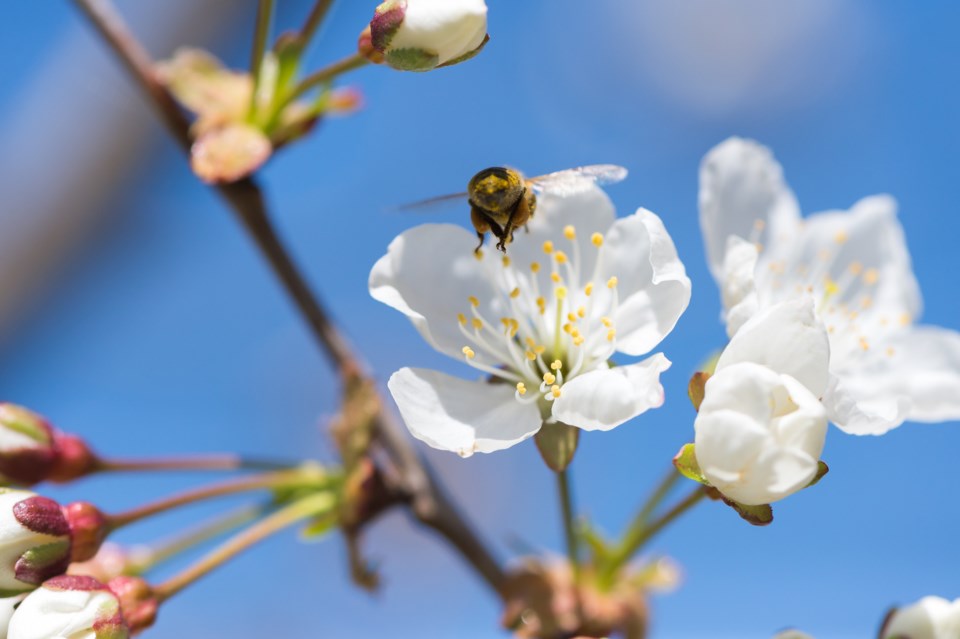EDITOR'S NOTE: OrilliaMatters is partnering with Sustainable Orillia to publish a weekly tip. Check back here every Tuesday evening for a new tip. For more information, visit the Sustainable Orillia website.
Spring 2021 … a time of renewal that has happily been gentler and earlier.
The season always brings a burst of energy, heightened this year by months of sequestering from winter weather and the ongoing pandemic. For most of us, spring triggers an undeniable urge to get out into our yards and gardens, to clean up and begin to lay out our plans for our 2021 gardening season.
And, as you look ahead and begin to plan, this is the ideal time to learn more about native plantings and how you can incorporate them into your gardens.
Native plants are those that grow naturally in an area and as a result, they are more adapted to the local climate and soil conditions than species from other regions.
They are more durable and generally need less care and water. Native plants bring sustainable diversity to our gardens and they are in harmony as a source of nectar, pollen and seeds for our butterflies, birds, insects and animals.
As homeowners, landscapers and local policy makers, we can help our birds, pollinators and local wildlife by opting for native plants whenever making landscaping decisions – which is right about NOW!
So which plants are ‘native’ to our region? How do you learn more about them? And where can you get some native plants and pollinators for your gardens? For more information, we contacted several local garden nurseries and the city’s Park Planning and Development Office.
We learned that there is a wide variety of perennials, shrubs and trees native to our area. With a little planning, local gardeners can enjoy blooms throughout the season (very important for pollinators), while preserving a healthy habitat for insects, birds and local wildlife.
Perennial varieties include Black-Eyed Susans, Red and White Trilliums, Bee Balm, Wild Geraniums, Purple Cone Flowers and many, many more.
Native shrubs such as the Common Lilac, Ninebark or Dogwood add colour and texture to your garden. And flowering trees like the Eastern Redbud will explode with vibrancy in your late spring garden. These are just a few of the native plants available for this area.
In conversation with John McMullen, Orillia’s Manager of Park Planning and Development, we learned that pollinating and native plantings are very much part of the city’s planning agenda.
Their priorities reflect not only best practice, but also growing public awareness of the benefits of using pollinating and native plants in parks, private spaces and gardens. Currently, McMullen and his team are putting the final touches on a butterfly and bee garden for Tudhope Park.
The new garden will feature many native flowers, shrubs and trees for pollinators. Interested readers are encouraged to visit the new garden (next to the Kids for Turtles building) and see first-hand how beautiful and appealing a garden of native species can be. Plantings for the new garden should be complete by the May 24th weekend.
McMullen advises that successfully preparing and planting a garden of native species, follows the same process as that for most of our gardens. He emphasizes the importance of good soil, ideally enriched with organic (composted) matter.
Despite the benefit of requiring somewhat less water and maintenance than non-native species, McMullen cautions that to be successful, native plantings will require some maintenance, particularly to defend against weeds and invasive species.
For interested readers, McMullen has provided the following link to Landscape Ontario’s website and the publication ‘Beautiful Non-Invasive Plants for your Garden’, which provides a great deal of information on plants that are suited and in many cases, native to our area.
Three of the major nurseries in the area have confirmed that they carry a variety of native plants in their assortments. Depending on weather conditions Ego’s, The Windmill and Scott’s Nursery will have assortments of native plants starting mid-April. Dates will vary slightly by nursery.
Pat Scott, at Scott’s Nursery, advises that If you can’t find a particular shrub, tree, ground cover or perennial, they can be special ordered.
And both Scott and Kristin Ego echoed the growing interest among customers for native plants. Often, as Ego mentioned, this interest is coupled with a desire to attract pollinators or migrating birds—underscoring the symbiotic relationship between native plants and their eco-surroundings.
With a little expert advice from any of our terrific garden centres, it seems there is nothing preventing any of us from creating an appealing, season-long garden that will enhance the sustainability of our immediate environment.
In summary, native plants are the ecological basis upon which life depends. Alien species sever the local food web and many have the potential to become invasive – think phragmite as an example.
Plants provide so much – food, medicine, shelter, water, air and of course, beauty. To the greatest degree possible, let’s not only shop local, but PLANT LOCAL and introduce more and more native plantings into our gardens this spring.
